 "Jake Stumph Racing" (jakestumphracing)
"Jake Stumph Racing" (jakestumphracing)
05/19/2015 at 09:19 • Filed to: BMW, weekend racing, track, HPDE, 135i, jakestumphracing, jalopnik, oppo, oppositelock, story, modification, N54
 3
3
 5
5
 "Jake Stumph Racing" (jakestumphracing)
"Jake Stumph Racing" (jakestumphracing)
05/19/2015 at 09:19 • Filed to: BMW, weekend racing, track, HPDE, 135i, jakestumphracing, jalopnik, oppo, oppositelock, story, modification, N54 |  3 3
|  5 5 |
Oil temperature is the Achilles’ Heel of the N54 engine in the road racing arena. Despite the 135i showcasing BMW’s attempt at addressing high oil temps in the original batch of N54 engines as seen in the 2007 and early 2008 335i, the factory oil cooling solution is lacking. As equipped from the factory, the 135i has a small accessory oil cooler, 8.75”x4.75”x1” in size, which equates to a paltry 41 cubic inches. To the engineer’s credit, despite the tight packaging, there is a ducting solution to direct air directly from the front bumper cover inlet towards the cooler, but it’s not enough. Normal operating temperature for the N54 engine is between 220-240*F, and hard driving of any sort sees these temperatures skyrocket in excess of 270*F.
The factory oil cooling system has a thermostat to control when the oil cooler is in use, which aids in quicker warm ups (read: reduced engine wear) and reduced emissions on cold starts and initial driving. That is great, except for the fact that the thermostat does not fully open until 240*F. “Ideal” oil temperatures for the normal combustion engine is just above 212*F, when the oil is hot enough to burn off condensation and other impurities that collect in the oil.
So, looking at that information alone, there is a discrepancy between what the thermostat is regulating versus where the car should be for ideal conditions. The aftermarket has responded by offering oil thermostat bypasses, with the most visible option being the Burger Motorsports (BMS) unit. What the unit does is replace the factory thermostat with a plug that effectively leaves the system open 100% of the time. The premise of this being that since the oil cooler is now active 100% of the time, the car should never run as hot as before, since the oil cooling system is always active, thus never giving the car a chance to run hot in the first place.
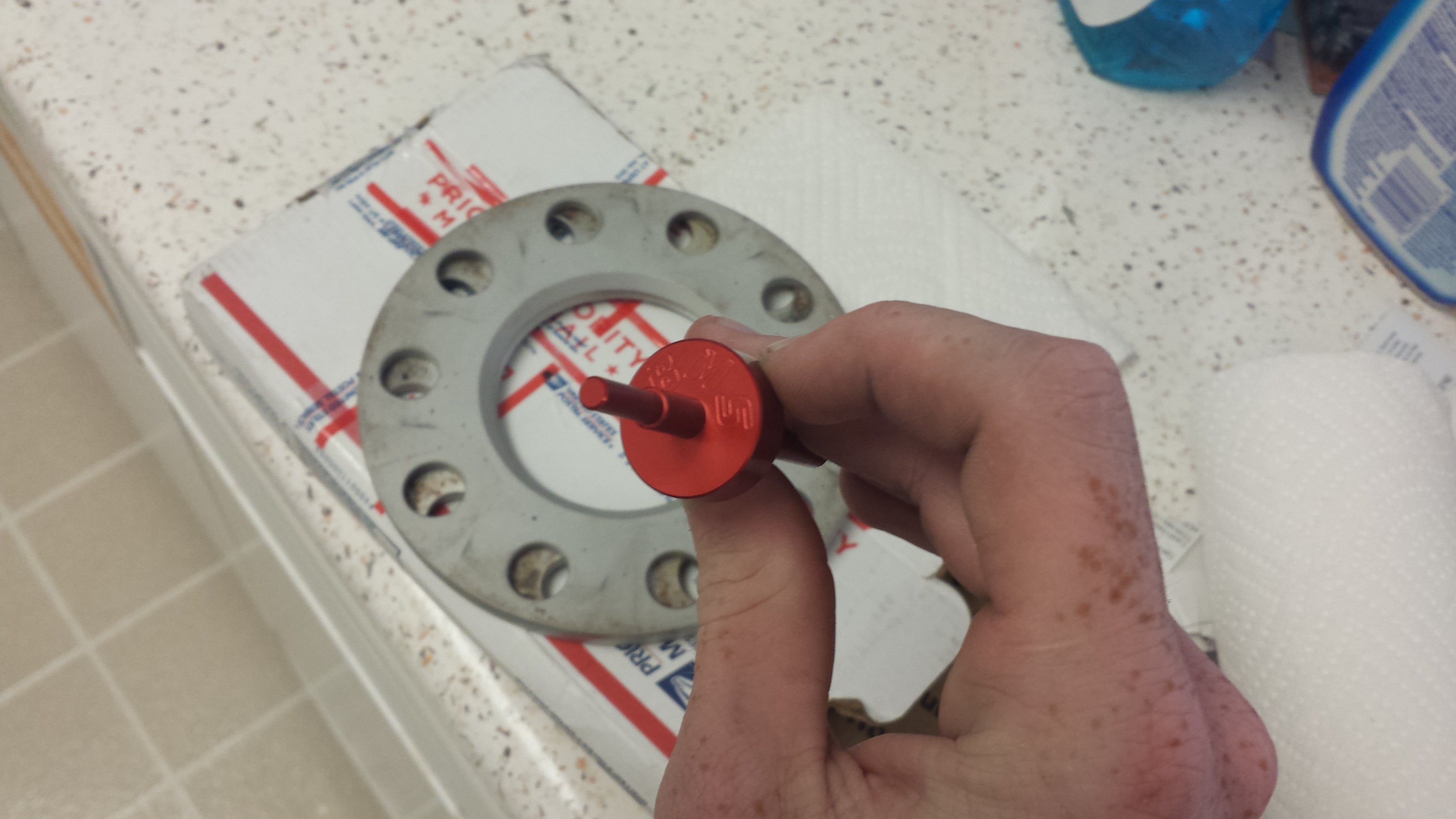
The aftermarket bypass.
Below is a quick rundown on the removal of the OE thermostat and installation of the BMS bypass.
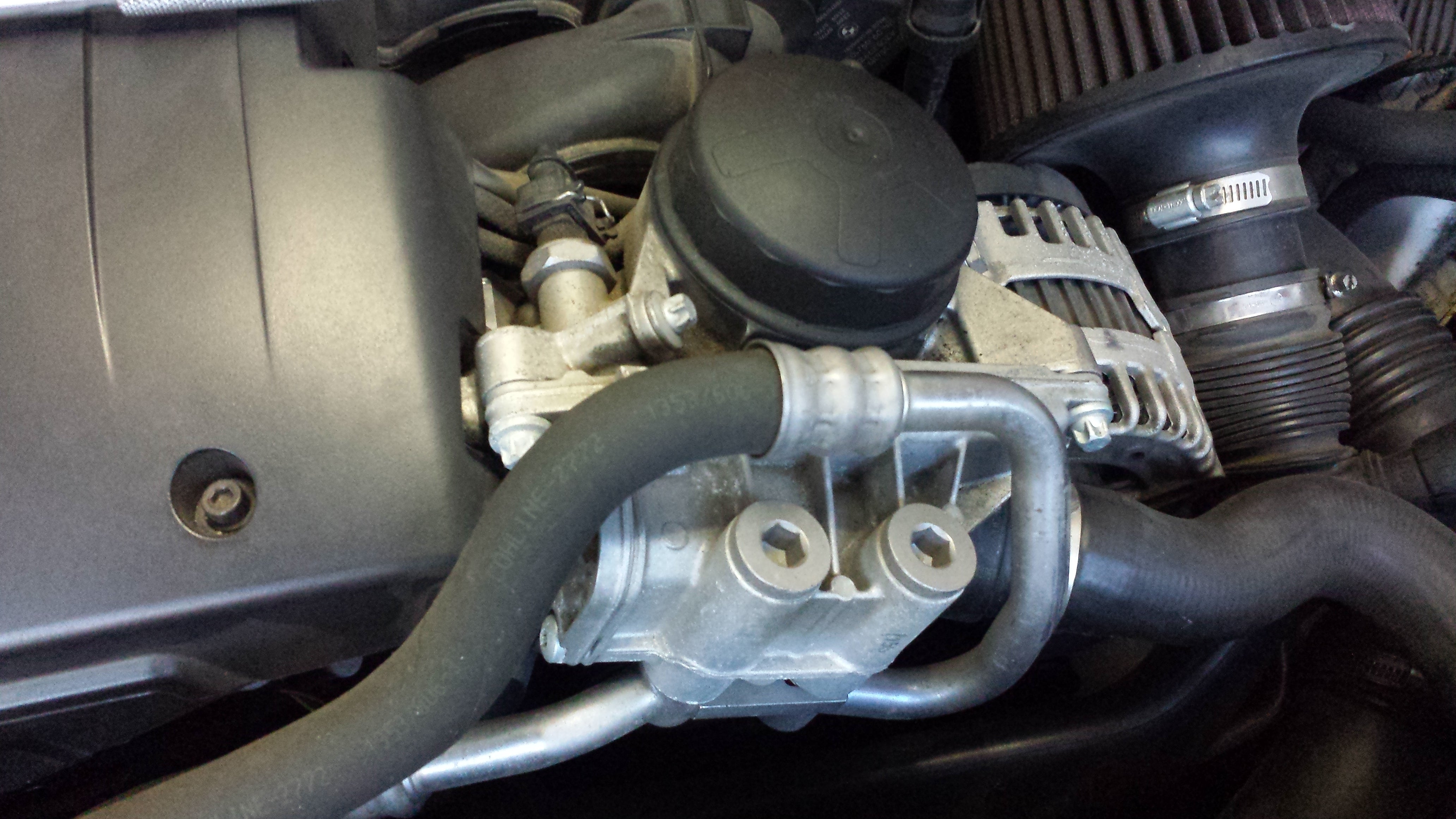
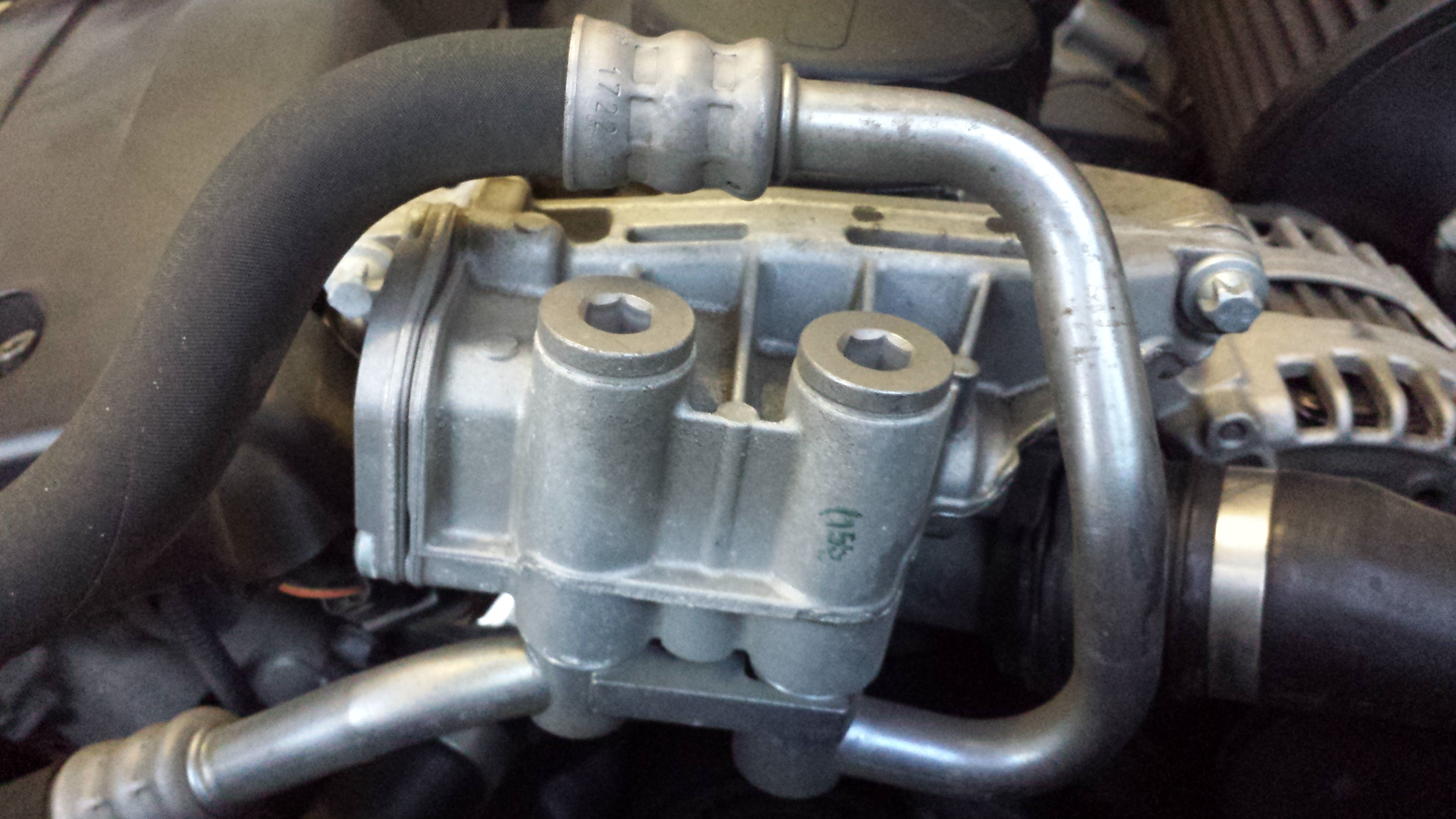
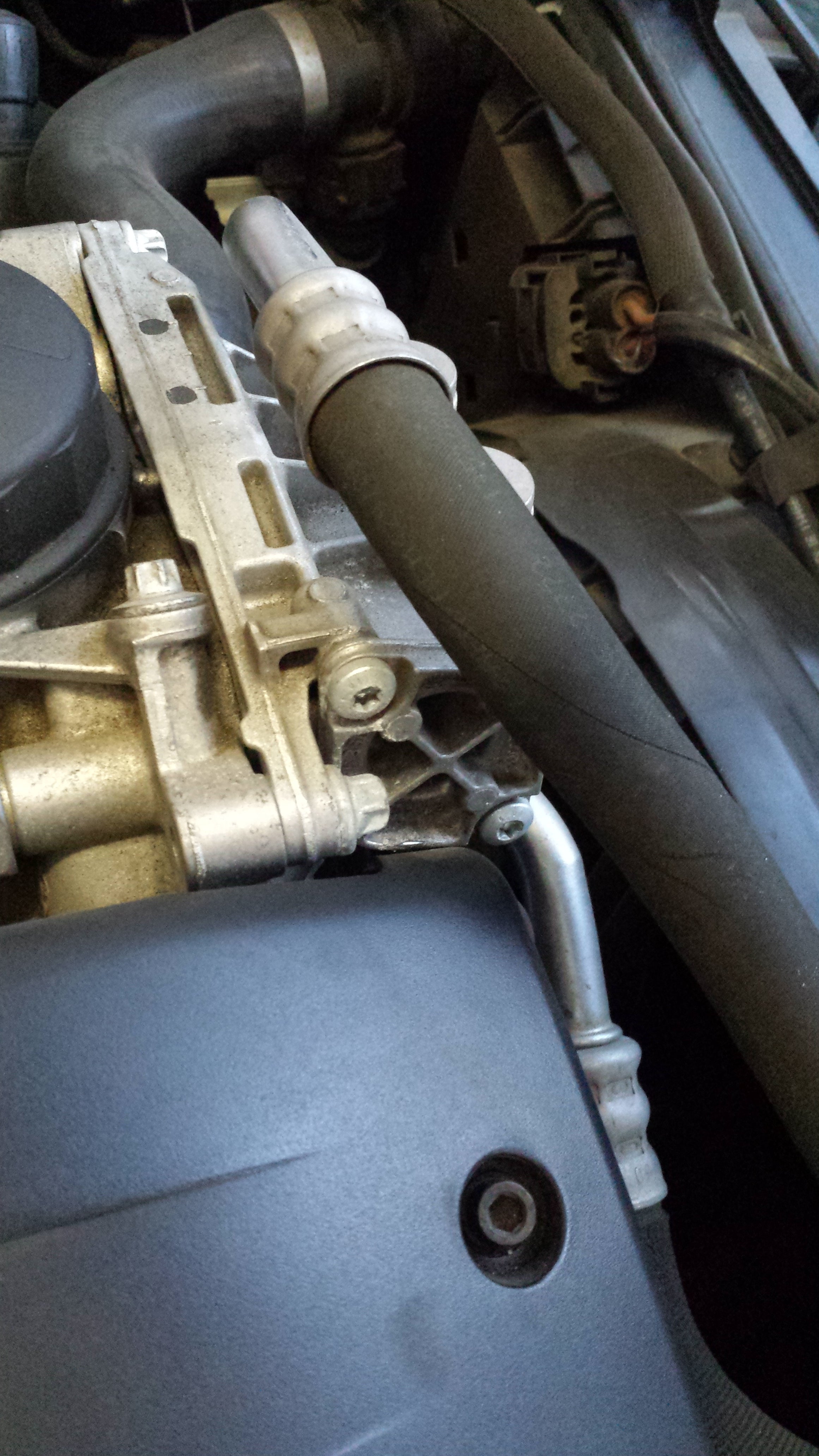
There are three bolts that will require removal, one on the oil filter housing side (E12-socket), and the two small Torx screws (T25) on the oil thermostat housing plate. Loosening, or removing the plastic engine cover will aid in accessing everything, but may not be required.
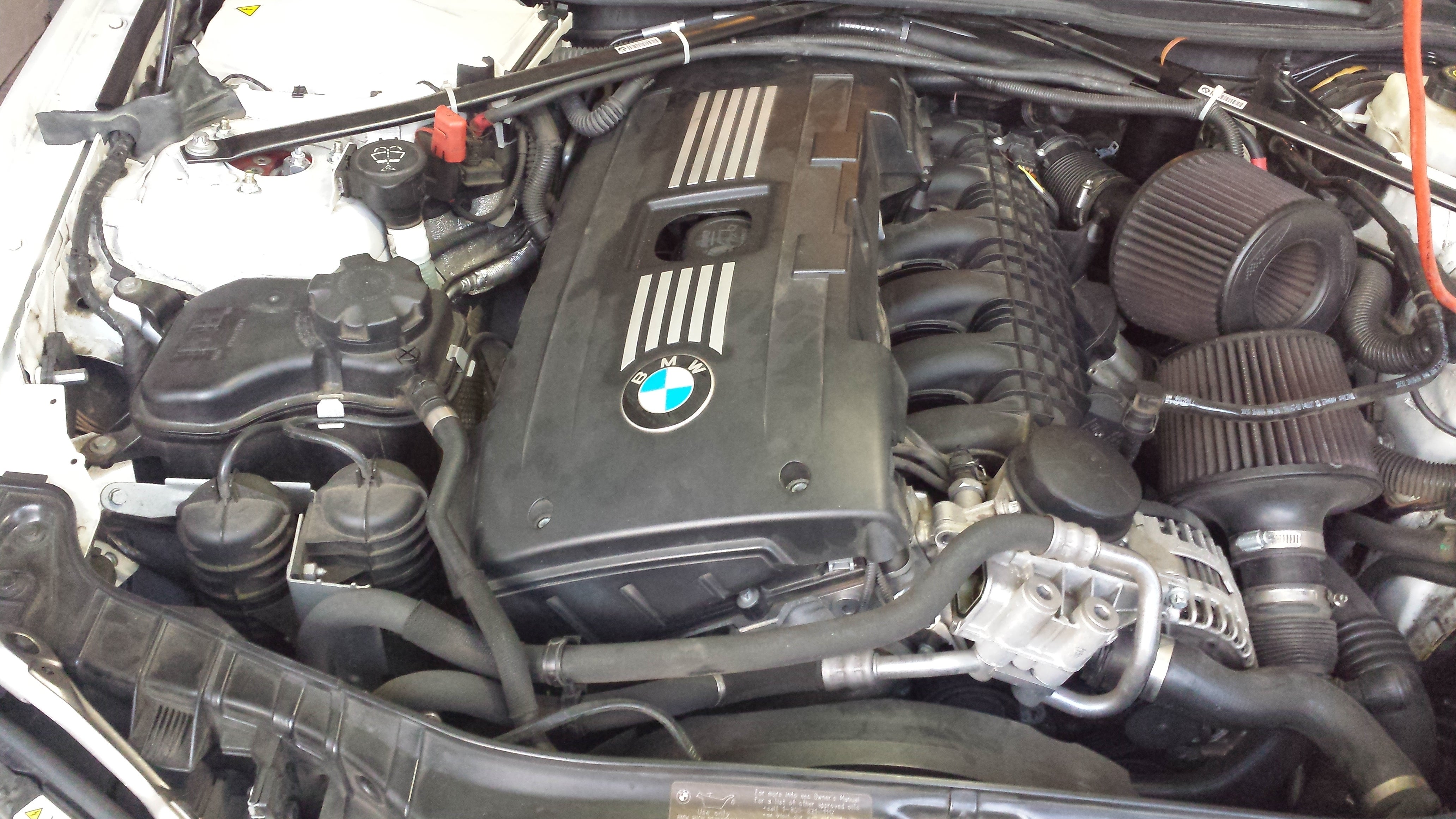
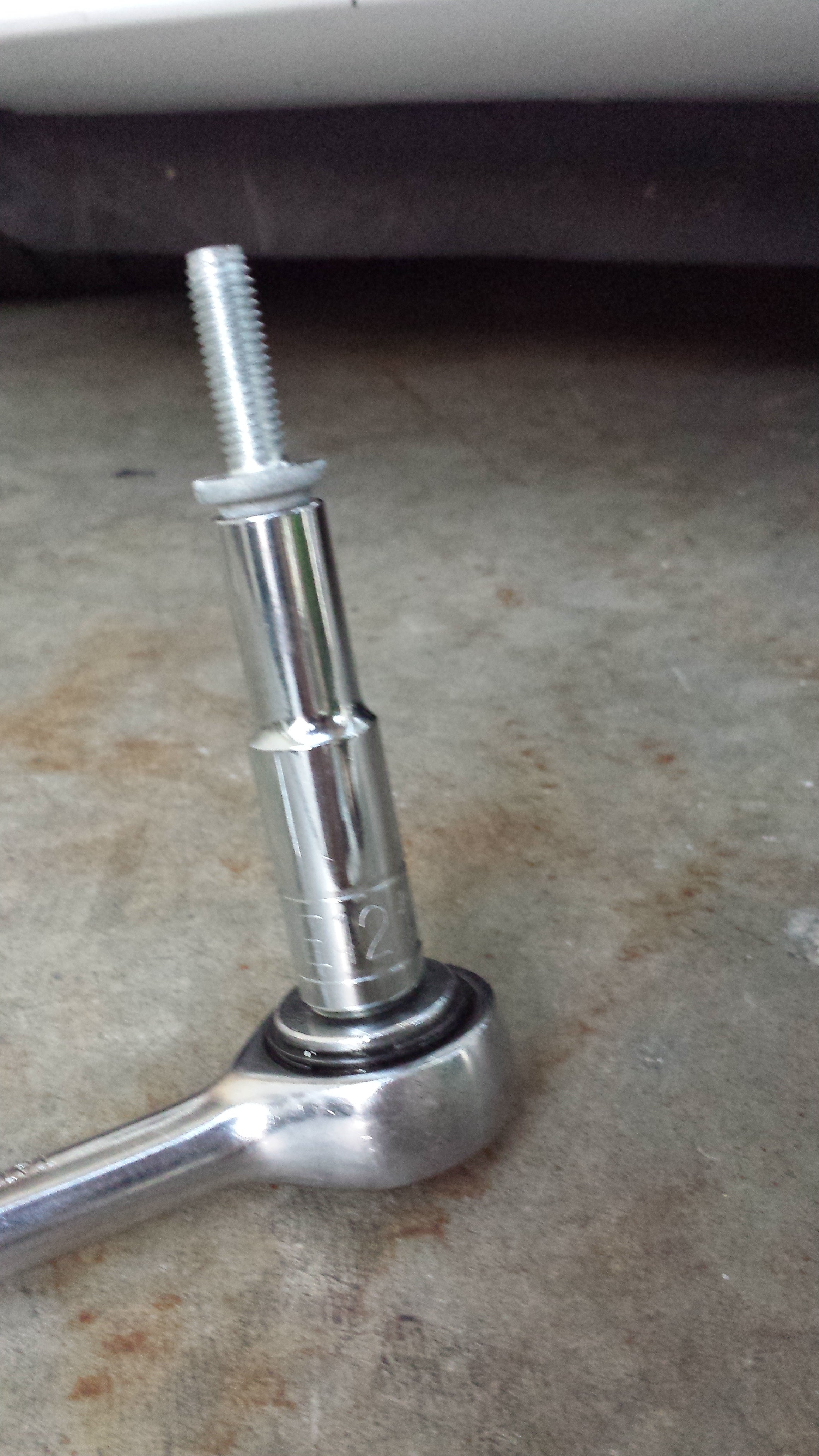
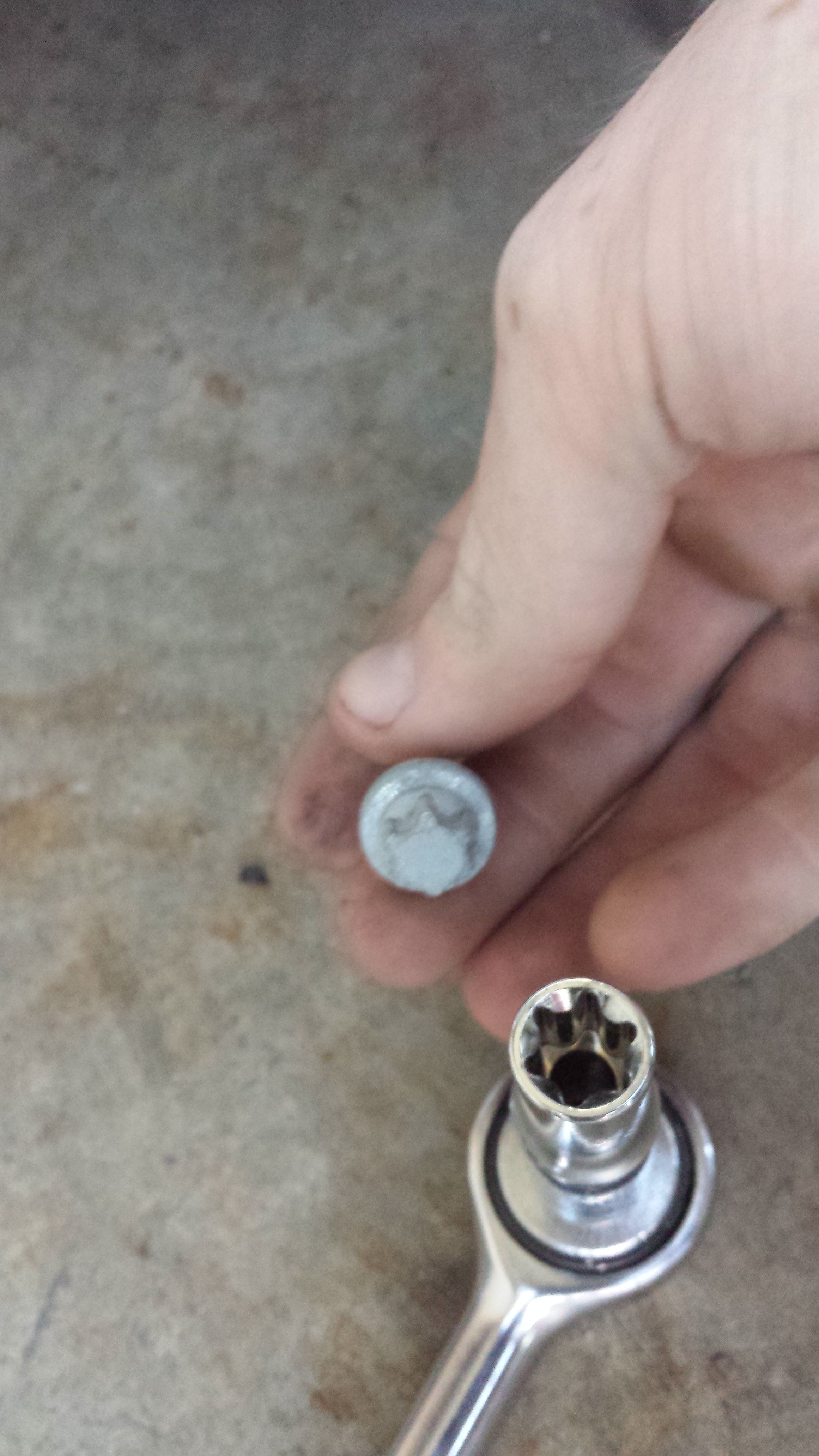
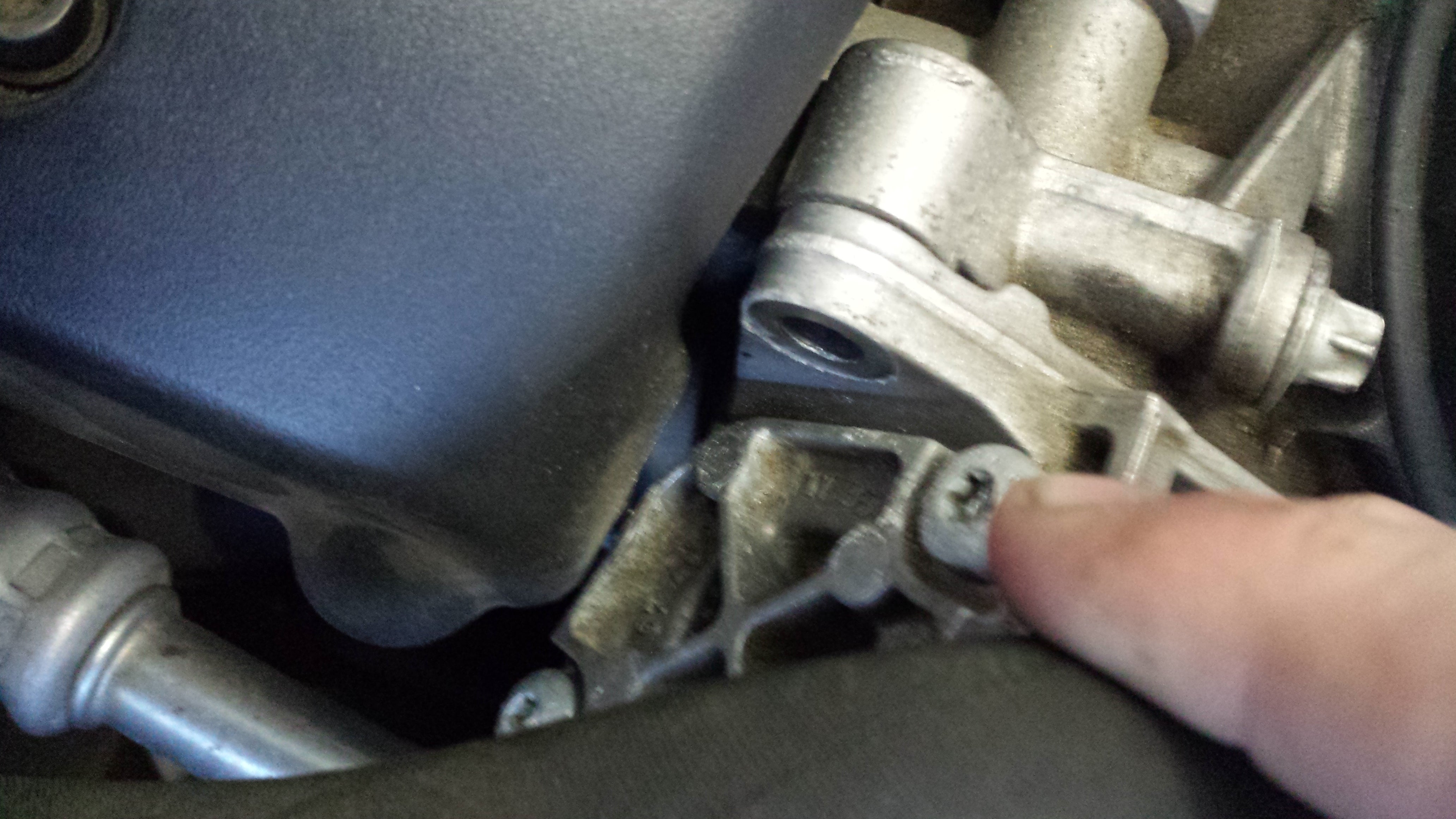
That’s the oil filter housing bolt that needs to be removed, in order to get full access to the upper Torx fitting.
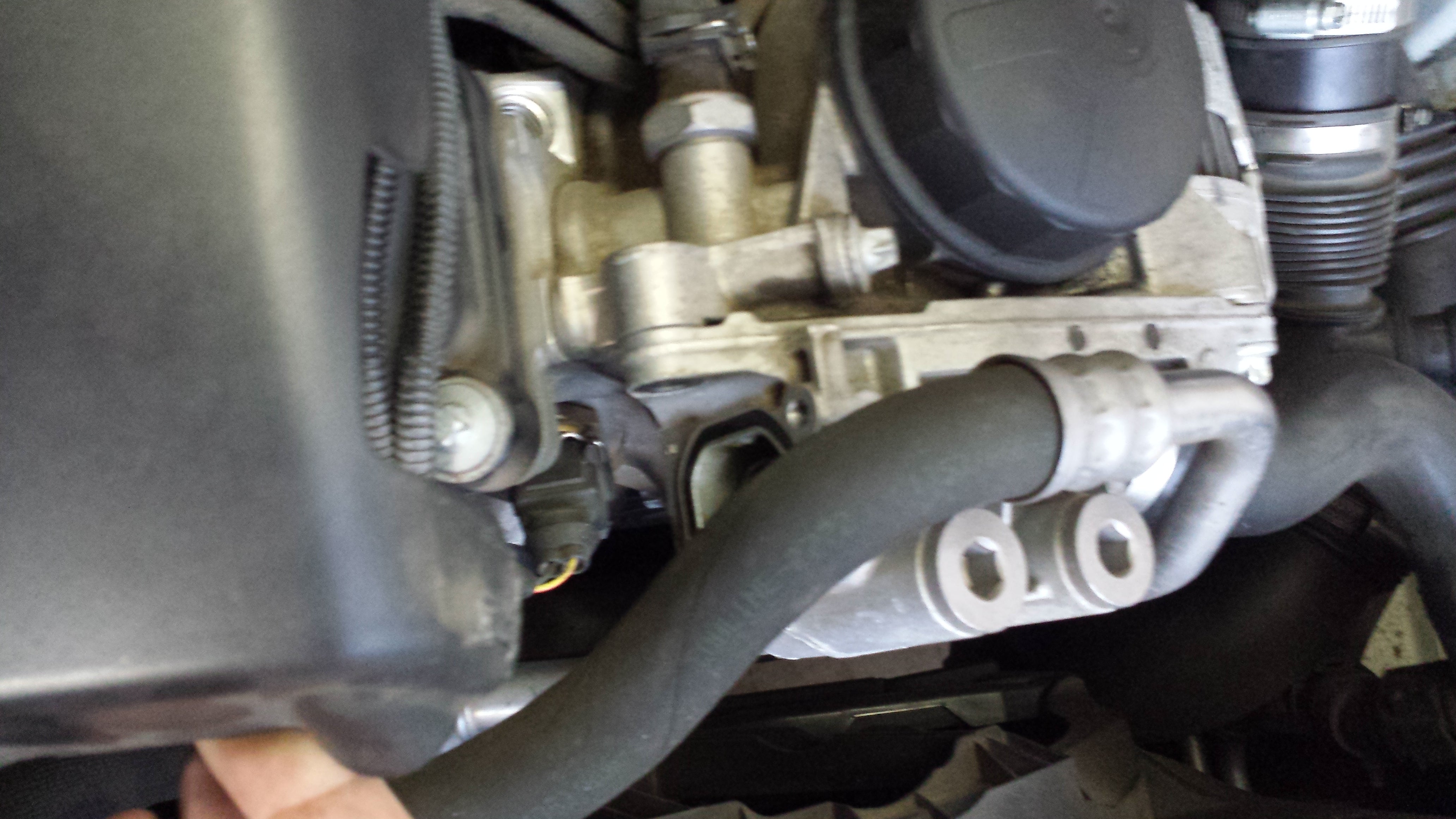
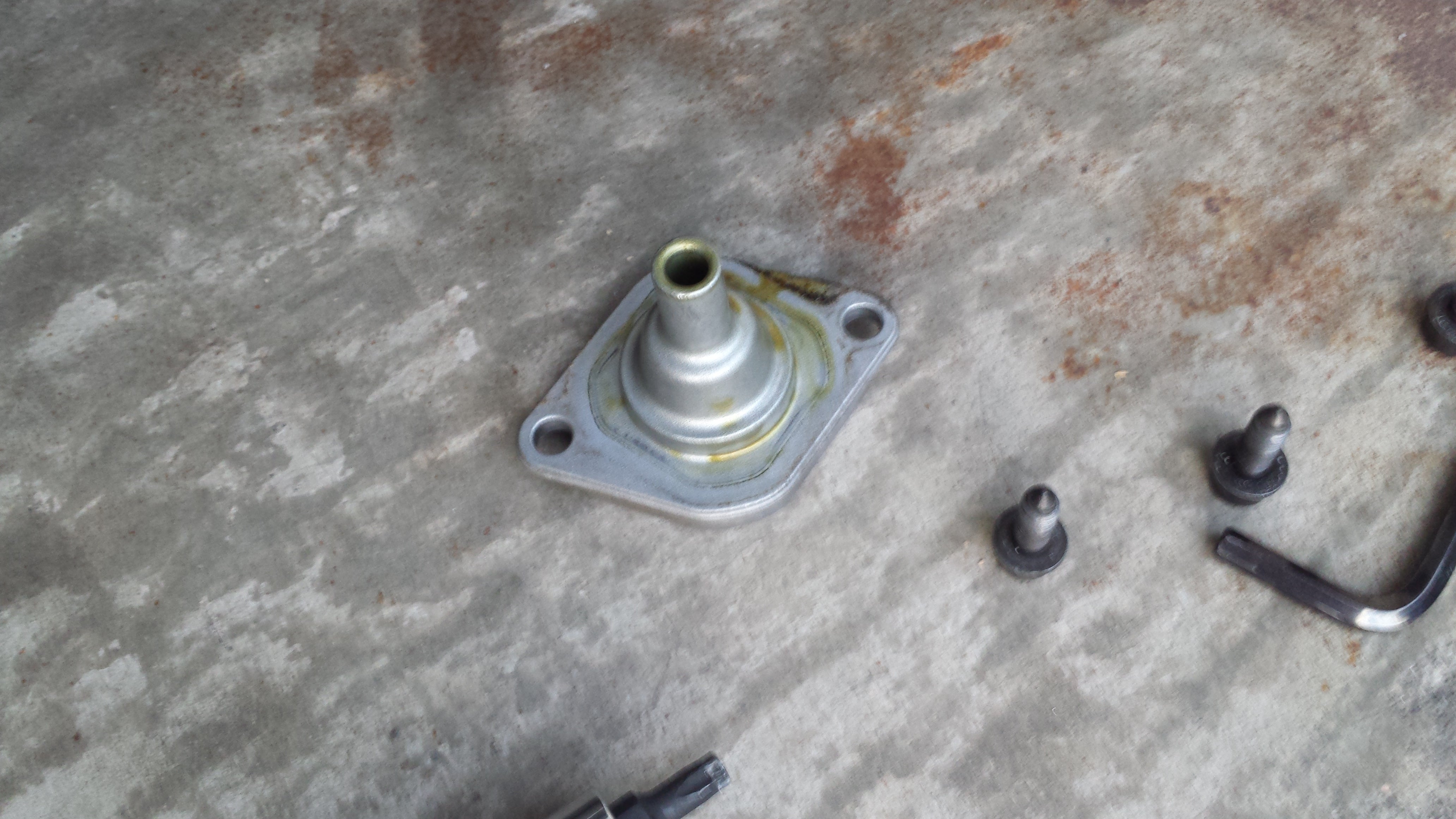
Thermostat cover plate removed.
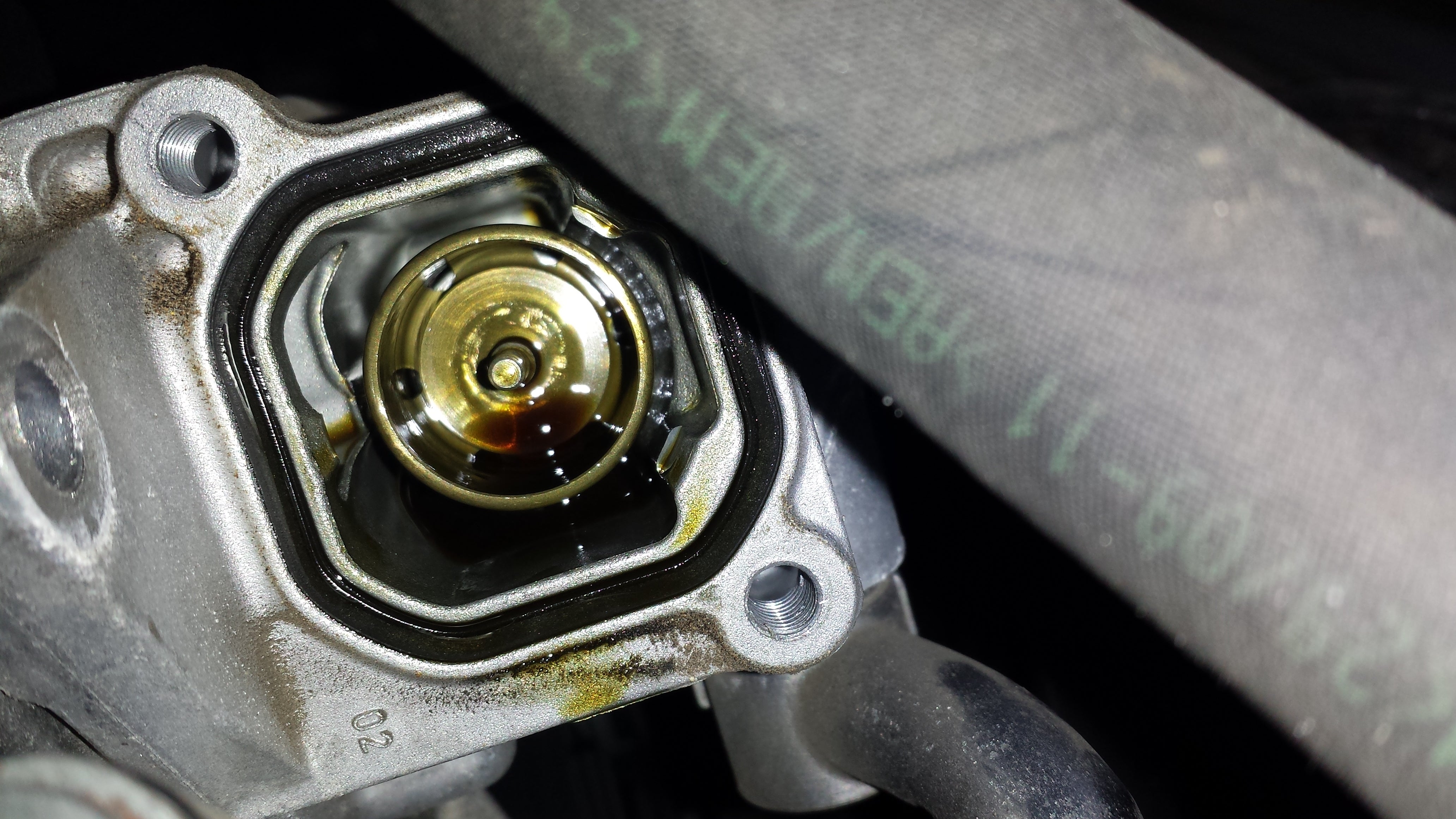
The OEM oil thermostat as equipped from the factory. Give it a small twist and pull gently. It does not take much force to remove, if you are sweating and swearing, you’re doing something wrong. Stop before you break something.
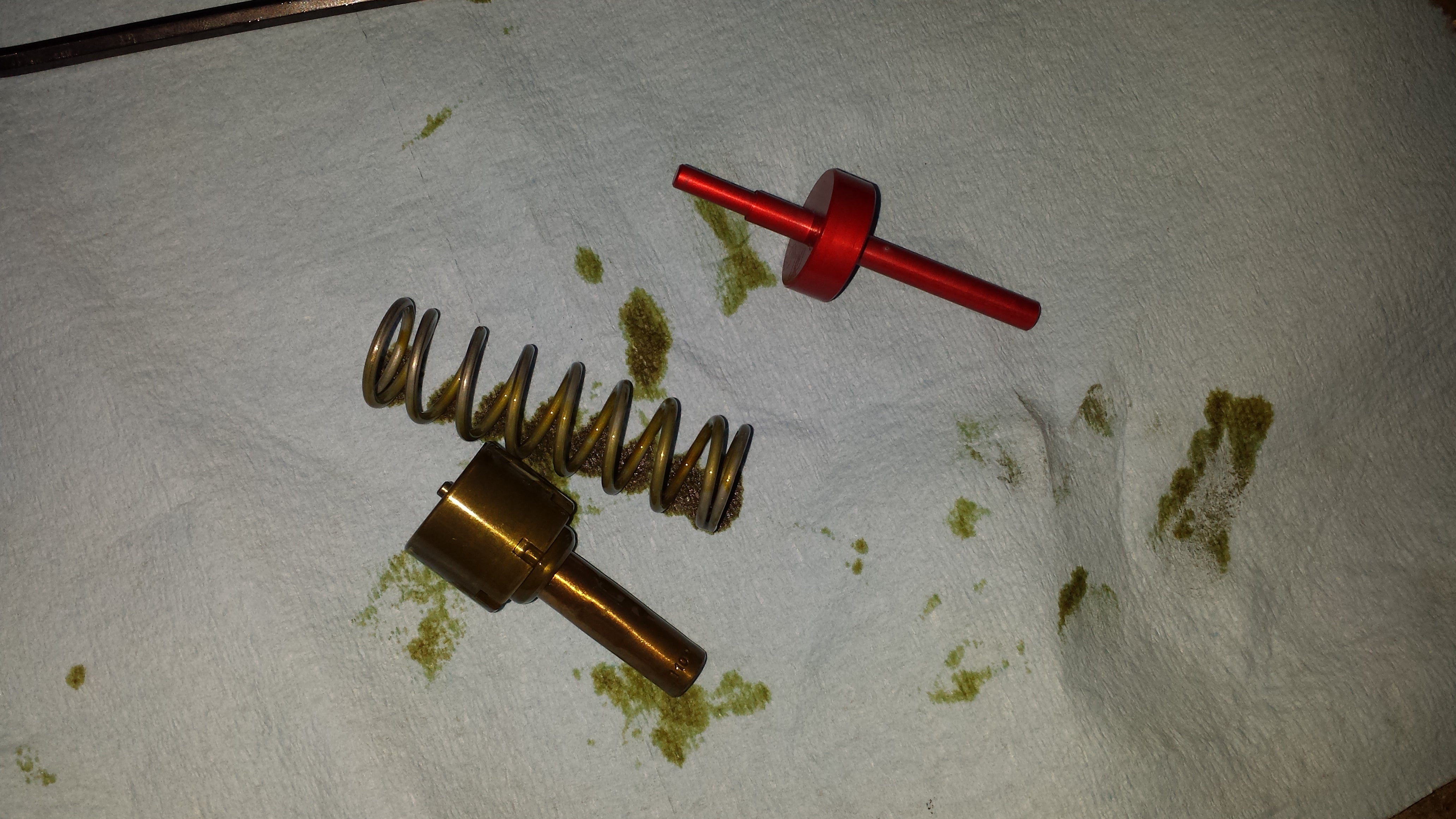
Compare. The OE unit is controlled by the spring, which has a variable amount of tension, dictated by the oil temperatures that pass over it. As the temperatures increase, the coil slowly unfurls, progressively opening up the thermostat. The BMS unit runs the system in the fully open position, 100% of the time.
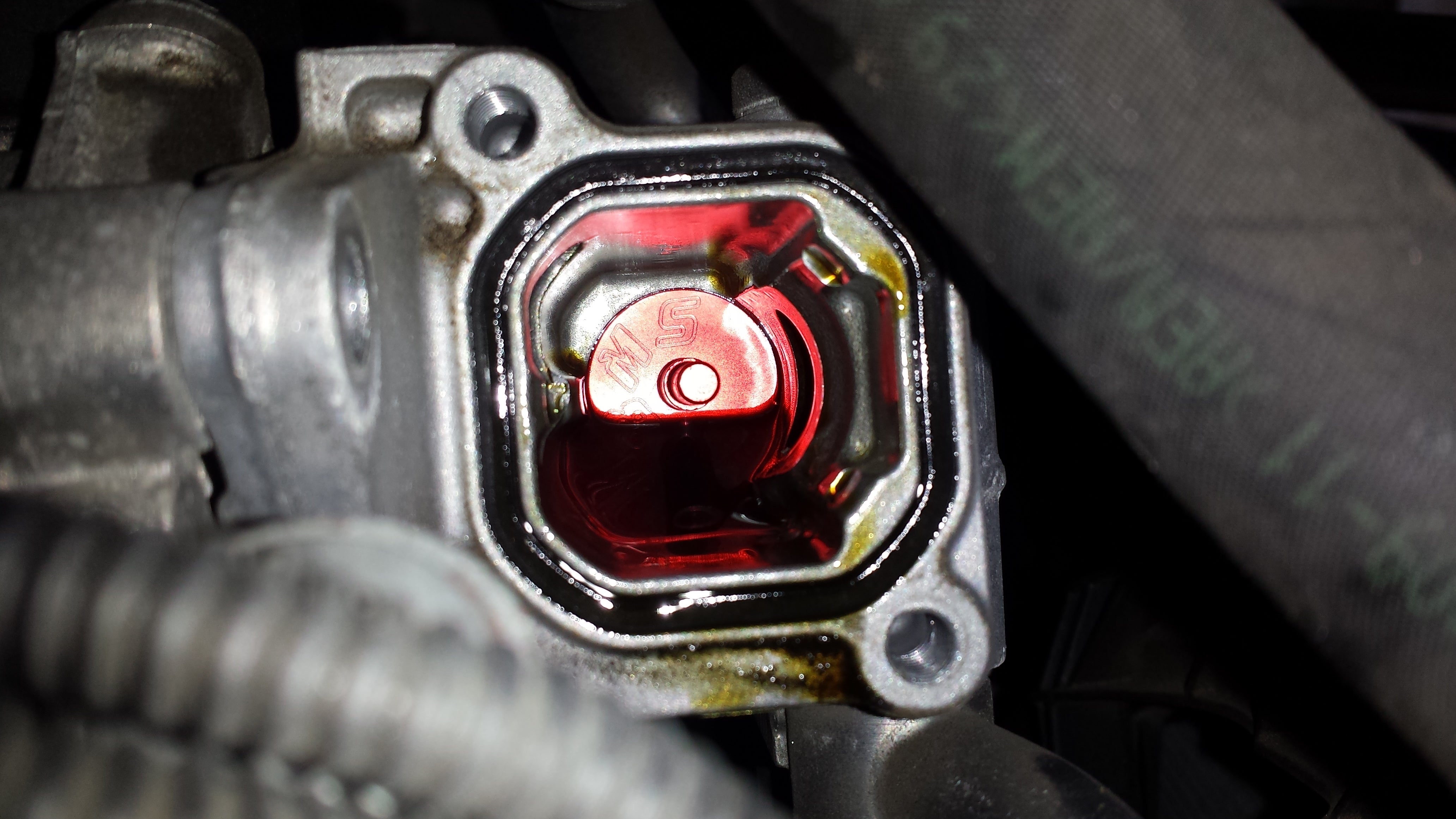
The aftermarket bypass installed in the oil filter housing.
After starting the car up, checking for leaks, and generally confirming that I wasn’t going to burn to a crisp in 1.5 tons of molten steel, it was time to drive the car. In the quest to satiate my curiosity about the bypass, I drove the car full time, and parked my DD for the next few weeks. There were about 500 street miles put on the car, two very vigorous and spirited passes through the mountain roads, and a weekend track day at Buttonwillow Raceway Park.
Here are my observations, broken down into street, canyon, and track usage. As per my usual protocol, the car was driven gently until oil temps exceeded 190*F, which is the point where I declare the car officially “warmed up” and safely able to handle boosting.
On the Street:
“Is the temp gauge ever going to budge off cold?” With the bypass present, the already slow warm up times of the N54 became insufferable. For perspective, with the stock thermostat in place, and off a true cold start, it would take approximately 8-9 miles of highway driving at 65mph to reach 190*F oil temps. With the bypass in place, there were entire DAYS in which I did not see temps reach this optimal point. On the days in which the temp gauge did manage to creep up high enough for me to feel comfortable driving the car hard, I became acutely aware of how effective the oil cooler can be. For example, if I hit traffic, and came to a slow, I could watch the gauge and see the temps raise ever so slightly due to the decreased airflow. As soon as I took of again, and the cooler received air flow, the temp gauge would drop faster than a rock in the ocean. In the same regard, changes in ambient temperature were also much more noticeable, because once again, the temp gauge would follow the ambient temp. The days in which I never saw 180*+ were days in which it was cooler outside. Regardless of what I was doing, on the street, the highest peak temp I saw was 200*F. With the stock thermostat, 240* was normal and 250* was par for the course when actually boosting, or doing a pull.
In the Canyons:
Both passes in the canyons were done at night with minimal traffic, with ambient temps hovering between 60-65*F. The cool night air, and high pace in the canyon roads (good airflow to ze cooler) meant that no matter how hard I pushed it, temps never exceeded 220*F. Previously I would see regular temperatures of 270*F when really hustling through the mountains. Water temps also seemed a touch lower over all as well.
At the Track:
This was the most important test. Driving on track means extended periods of high temperatures and sustained high G-forces, which are the most demanding miles that an engine will see. The weather at Buttonwillow was moderate, around 70*F. Warming the car up was tedious, and mainly involved wasting a lot of gas with excessive idling, or creeping through the pits to try and put at least some minor amount of load on the engine. On track, things looked good, for about 1 lap. Temps started climbing, and climbing, culminating in the same peak temps of 270*F. Damn it.
Conclusions:
Does It Work:
Yes, yes it does. Thermostats, as well as this bypass are simply designed items, and the BMS unit works as designed.
My Thoughts:
This is not the right solution for the N54 platform. Having the system remain fully open at all times ruins the short duration driving experience of the car, as you spend the entirety of the journey thinking about whether or not it’s safe to hit boost when the temp gauge still hasn’t budged in 15 miles of driving. These prolonged periods of cool running were invariably hard on the engine, and likely would cause additional wear if used as a long term solution. On the flip side, once you waste an 1/8th of the gas tank just trying to get the car warm enough to actually drive it 9/10ths hard, the bypass can’t magically correct the high peak temps seen in the road racing/track environment. In the canyons, the saving grace for the bypass were the low ambient temperatures, and constant supply of air flow combined with a sub-track level pace. Truly disappointing, but relying on a band aid to patch a gunshot wound is foolhardy.
With that said, the thermostat bypass has been pulled from the car and has been shelved indefinitely, and the OE thermostat refitted. After thinking about it further, I do still believe that the factory thermostat is a poor pairing for this car, and it’s cooling system. However, removing the thermostat completely is not the right means of rectifying the problem, and only serves to create problems of its own. What is really needed is a thermostat with the different temperature rating. Instead of a 240*F thermostat, if there was a 200* or 210* unit, THAT would be great. It would allow the car to get up safe operating temperatures, and once past 180-190*F and it’s safe to boost, the car would naturally see it’s way just past the 212*F water boiling point to rid the oil of any collected impurities.
However, it would need to be a secondary aid. Relying on the thermostat alone to keep these cars running cool under the most demanding of circumstances is not the right answer. That instead falls onto revising the cooling system and adding supplemental coolers.
Is this the right modification for some? Possibly. They would need to live in a perpetually warm climate, as SoCal can be too mild in the winter for the bypass to be practical in street driving. The car would have to be a street driven N54 only, as on track, it offers no advantage over the OEM thermostat. On the street, it kept the car cool no matter how much I beat on it, and for as cheap as the bypasses are being sold for, it you’re running 18PSI and full bolt-ons, it’ll be a great aid in not overheating the engine on the street or the drag strip when doing back-to-back pulls.
That all said, any one want a cheap t-stat bypass? I know of one for sale.
 335IS
> Jake Stumph Racing
335IS
> Jake Stumph Racing
08/11/2015 at 20:55 |
|
Do you still have the BMS Bypass?
813-333-3393
 Jake Stumph Racing
> 335IS
Jake Stumph Racing
> 335IS
08/12/2015 at 14:25 |
|
Removed it, and sold it a long time ago.
 NZ335i
> Jake Stumph Racing
NZ335i
> Jake Stumph Racing
08/28/2016 at 17:20 |
|
When you take the oil thermostat cover off does the spring come first or the brass piston. I am trying to work out if mine has been swapped over. It is not clear from your images. I just want mine back to stock. Hope you can help.
 Jake Stumph Racing
> NZ335i
Jake Stumph Racing
> NZ335i
08/28/2016 at 23:15 |
|
IIRC, the spring comes out first, then the piston. Good luck.
 2012Z435i
> Jake Stumph Racing
2012Z435i
> Jake Stumph Racing
03/16/2017 at 22:02 |
|
I did some searching and found this: http://www.ad-eng.net/store/p19/BMW_N54_N55_Low_Temp_Oil_Thermostat.html
Same idea as the stock thermostat, but the spring reacts at a lower temperature. It seems like a great compromise between the stock unit and the Burger unit. I haven’t received it yet but it looks promising.